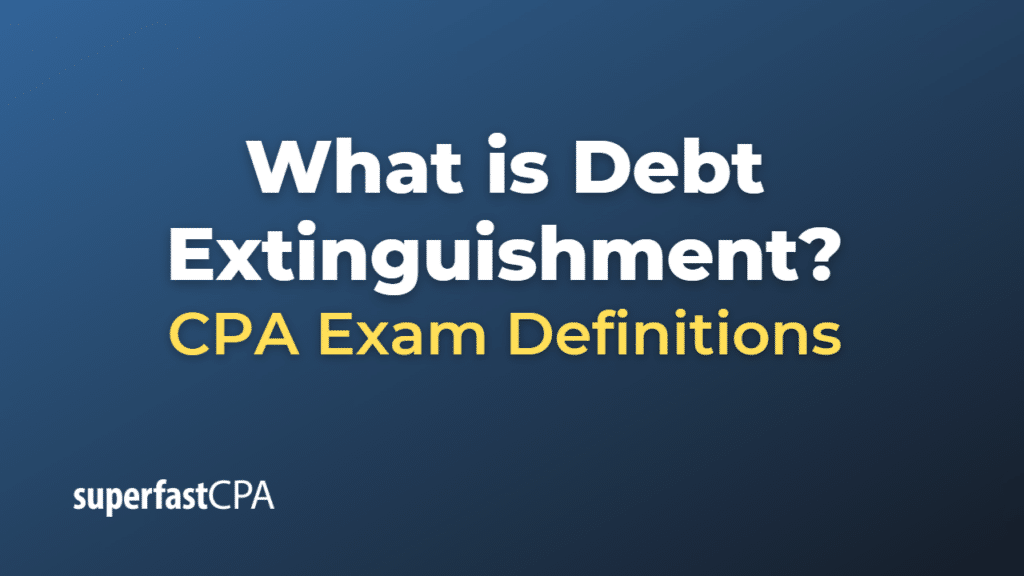Debt Extinguishment
Debt extinguishment refers to the process of a borrower completely paying off their debt obligations to a lender. It’s a financial term used to indicate that the borrower has fulfilled their obligation in repaying the principal and interest on a debt.
There are two types of debt extinguishment:
- Extinguishment of debt through repayment: This is the most common form of debt extinguishment. It happens when the borrower makes payments over time to the lender, usually both principal and interest, to fully repay a debt according to the terms of the lending agreement.
- Extinguishment of debt through restructuring or early repayment: Sometimes, a borrower might negotiate with the lender to pay off a debt earlier than originally planned or to restructure the terms of the debt. If the borrower repays the debt under significantly different terms, this could also be considered an extinguishment. This often involves a lump sum payment that is less than the total outstanding debt, which the lender agrees to accept as full payment.
In accounting, debt extinguishment can have significant implications. For instance, if a debt is extinguished through early repayment or restructuring, and the amount paid is different than the carrying amount of the debt, the borrower may need to recognize a gain or loss in their financial statements.
Debt extinguishment is typically a good thing for the borrower, as it reduces their liabilities, can improve their credit score, and often results in less interest paid over time. However, it’s important for borrowers to understand the terms of their debts, as there may be penalties or costs associated with early repayment or restructuring.
Example of Debt Extinguishment
Let’s look at a couple of examples of debt extinguishment:
Example 1 – Extinguishment through Repayment:
Imagine that you take out a car loan for $20,000 with a 5-year term. Over the course of those 5 years, you make monthly payments towards the loan, which include both principal and interest. At the end of the 5 years, you’ve paid off the loan in full. This is an example of debt extinguishment through repayment – you’ve fulfilled your obligations under the loan agreement, and the debt is extinguished.
Example 2 – Extinguishment through Early Repayment or Restructuring:
Now, let’s say you have a business loan of $100,000, but your business has been doing well and you have accumulated cash reserves. You decide to negotiate with your lender to pay off the loan early. The lender agrees, but they charge you a prepayment penalty of $5,000. You pay the lender $105,000, and the debt is extinguished. Despite the penalty, this might be financially advantageous if it saves you a significant amount of interest that you would have paid over the remaining term of the loan.
Alternatively, if your business was struggling and couldn’t meet its loan payments, you might negotiate with your lender to restructure the debt. The lender might agree to reduce the amount owed to $80,000, which you pay off in a lump sum, extinguishing the debt. In this scenario, your business would likely need to recognize a $20,000 gain (the difference between the original loan amount and the amount paid) in its financial statements.
Both of these scenarios are examples of debt extinguishment through early repayment or restructuring. They involve fulfilling the debt obligation in a way that’s different from the original loan agreement.













